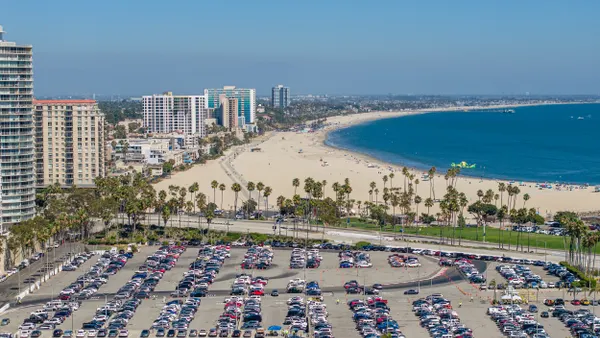Dive Brief:
- A Brookings Metro report published Sept. 6 highlights that Black renters disproportionately experience energy insecurity, which stems from an inability to pay energy bills.
- The researchers’ analysis of 2020 data found that 59% of Black renters faced energy insecurity compared with 36% of White renters. The report calls for state and local governments to implement policies that focus on Black renters and recognize the history of unjust and racially discriminatory policies.
- “Climate change is an amplifier of insecurities,” Brookings Metro senior research associate, Manann Donoghoe, said in an interview. “If you're a low-income renter already struggling to pay certain bills, and you get hit with extreme heat, that tightens up the budget and can make affording other things in your life a lot more difficult.”
Dive Insight:
The report comes on the heels of the hottest summer ever recorded, in which air conditioning was a life-saving necessity for many. But an increasing demand for air conditioning also means higher energy bills for residents, and the bills may continue to climb as climate change makes many places hotter.
Renters in general are more likely to spend a larger proportion of their income on energy bills. Furthermore, neighborhoods with more Black residents often face more intense heat island effects than other areas. This can be attributed to centuries of racist housing policies such as redlining, which segregated such neighborhoods, caused lower rates of homeownership and “ensured underinvestment in those communities,” the Brookings report stated.
The report also found that 44% of Black homeowners faced energy insecurity in 2020, compared with 18% of White homeowners. The report points to especially widespread energy insecurity among Black renters in the West and South regions.
Donoghoe said that when it comes to energy insecurity, Black renters “are by and large, one of the most impacted groups alongside Indigenous Americans, [who] actually also have a really high rate of energy insecurity.” In their analysis, the researchers used the Energy Information Administration’s 2020 Residential Energy Consumption Survey.
Donoghoe said people qualified as energy insecure if they met at least one of these three criteria:
- They were unable to pay an energy bill.
- They forwent other crucial bills, such as rent or groceries, to pay their energy bill.
- They kept their home at an unsafe temperature.
The report says that major federal climate policy falls short in addressing energy insecurity and “is not reparative, because it sidesteps questions of racial equity and prioritizes one-size-fits-all mechanisms over those that consider distributional impacts.”
Donoghoe said the first step cities can take involves considering how the history of racially biased policies has shaped where people live and their housing quality. Once local governments reckon with that knowledge, they should consider and implement policies that address the gaps for vulnerable neighborhoods, which will start with targeting, in many cases, Black-majority or minority-majority neighborhoods, he said.
He added that in addition, “it would be great to see cities start doing a better job of tracking energy insecurity so that they have the evidence base, essentially, to identify the neighborhoods that are most in need and target their programs accordingly.”











